PROTECT YOUR DNA WITH QUANTUM TECHNOLOGY
Orgo-Life the new way to the future Advertising by AdpathwayFrom perfectly pointed, long-stemmed hybrid teas to domed clusters of ample floribundas, freshly cut roses bring easy elegance and high fragrance. A tall vase or an overflowing bowl of the petal-packed blooms is worthy of stop-and-smell-the-roses bliss. They’re that much more to enjoy and admire when clipped fresh from the garden.
Since we’re borrowing (and relishing) the delicious blooms from the flowering shrubs, we want to enjoy their beauty as long as possible. Following simple tips helps extend their freshness beyond a few days. With streamlined measures for cutting, processing, and light tending, cut roses last a week or more in the vase.
The Champion Sunblush

The Champion™ Sunblush Rose


Harvest at the Right Time
While roses last a long time in the vase, when to pick them depends on the stage of the bud and the timing of the arrangement. It also varies by time of day. The best time to clip roses is early in the day before the sun and heat begin the daily evaporation process.
Time of Day
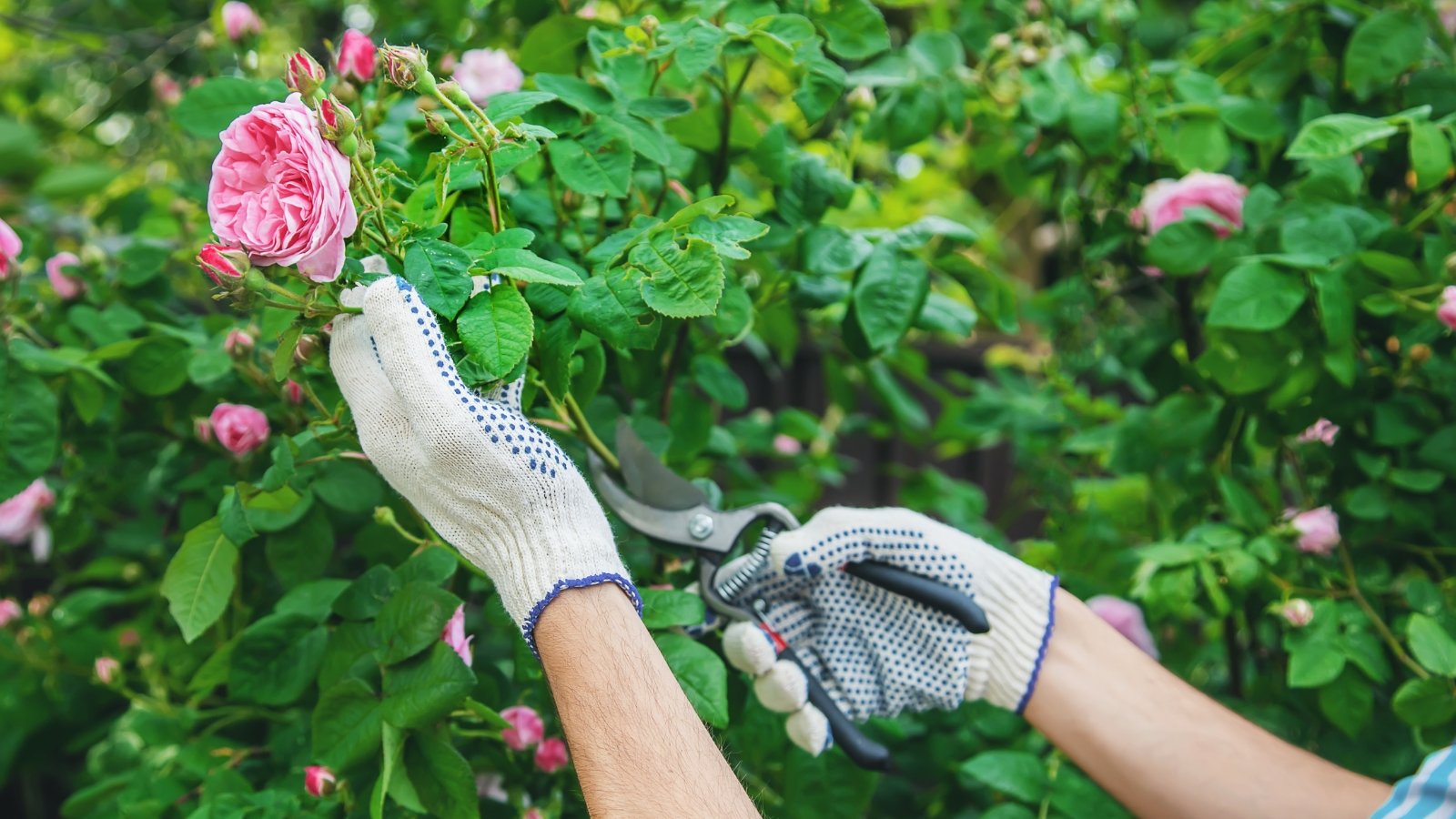 Morning harvests catch buds before they stretch and fade.
Morning harvests catch buds before they stretch and fade.In the morning, stems and flowers are full of moisture, which helps sustain them when cut. It also means you’ll catch opening buds before they fully unfurl in the day’s warmth. Evening is prime time for bloom clipping, too – the best practice is to avoid cutting in the heat of the day to retain the strongest and longest-lasting display.
Harvest when you know you’ll be able to hydrate the roses either as you cut or within about half an hour. Processing close to clipping time brings the best results.
Bud Stage
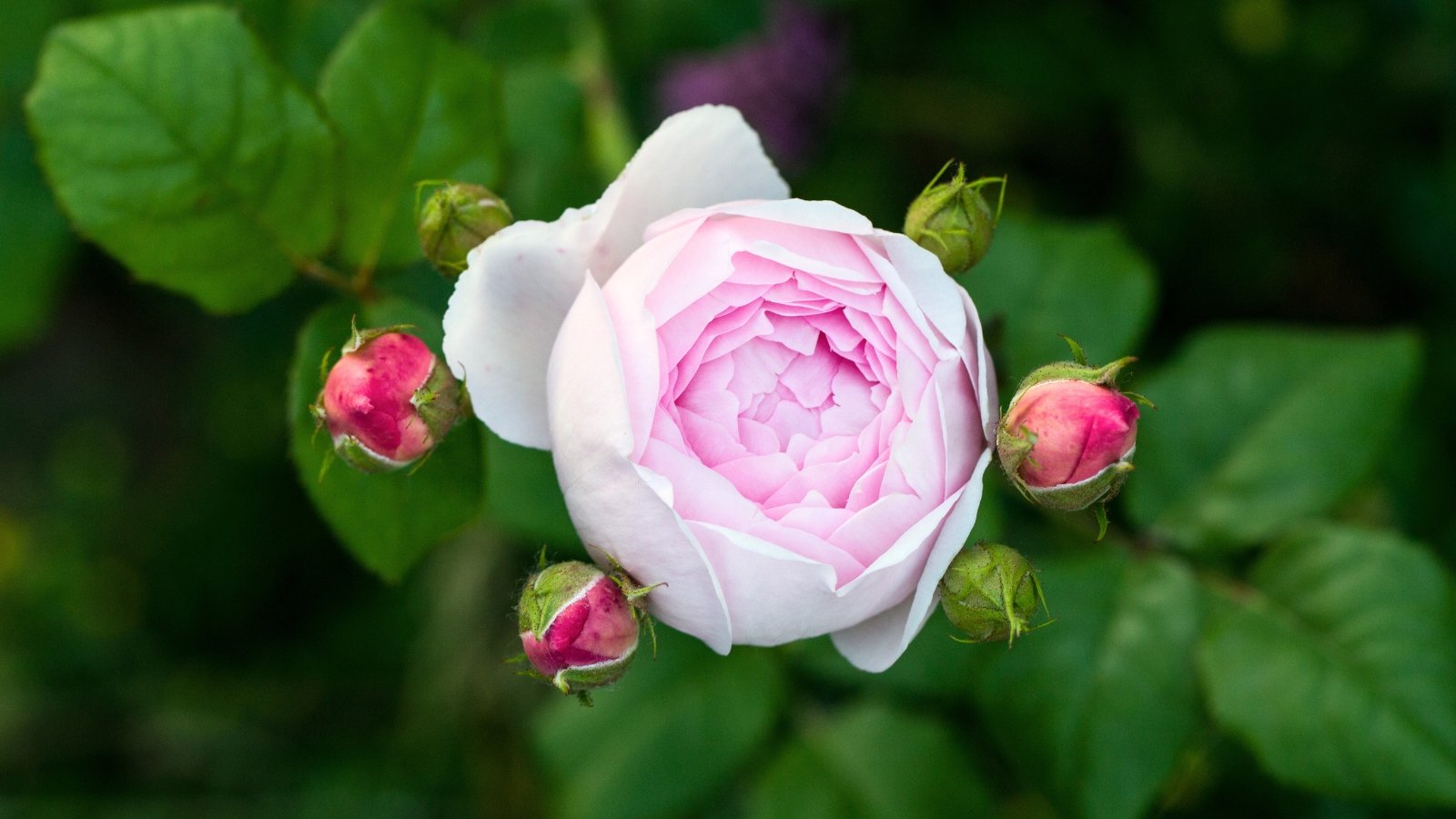 Harvest before the bloom shows off too much.
Harvest before the bloom shows off too much.For the longest-lasting cut roses, harvest in the early marshmallow bud stage. A few sepals will show downward reflexing, and the bud will be tight but spongy and beginning to open. Catching them in the bud stage means they aren’t yet pollinated, which prolongs the flowering time on the stem.
For arrangements that are further along or on the day of, harvest buds that are more fully open. They won’t last as long in the vase, but the instant gratification and swirl of petals may be worth it.
Make the Best Cut
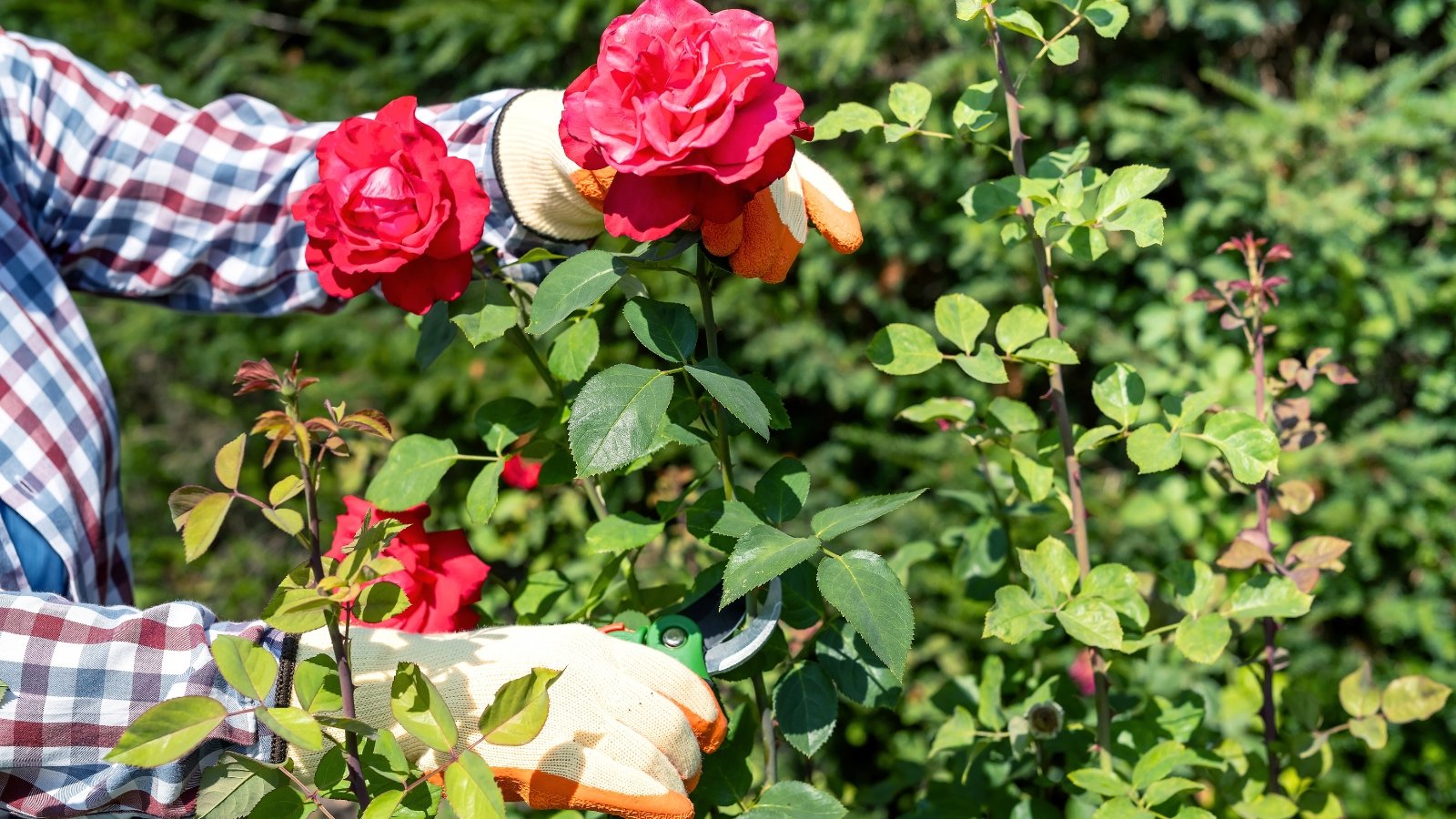 Snip above a leaf node, angled just right for grace.
Snip above a leaf node, angled just right for grace.With full buds and a mild morning for harvesting, we’re ready to make the best cuts. Use clean, sharp pruners to cut the length just above a leaf node. The leaf node is where new growth will emerge after the prune. Cut to a point that retains the shape of the shrub. The length of the stem depends on the type of rose and the aesthetic you’re going for in the arrangement. Trim long-stemmed varieties at 12 to 18 inches. Aim to capture at least two sets of leaves.
Snip the stems at a 45-degree angle. The angled cut increases the surface area for water uptake at the stem’s base. It may also protect the remaining leaf node and branch from moisture settling on the cut and causing disease problems. Cut in the direction opposite the node so water droplets run away from the bud.
Carry a bucket of warm-to-room-temperature water as you go to hold the stems immediately after cutting. Or, harvest them dry to hydrate within half an hour. Keeping them hydrated is the key to making cut roses last longer. The large blooms wilt quickly and bend at the neck without access to water.
For market-purchased or gifted roses, plunge them into tepid water as soon as you can to preserve them and stave off wilting.
Sanitize the Vase
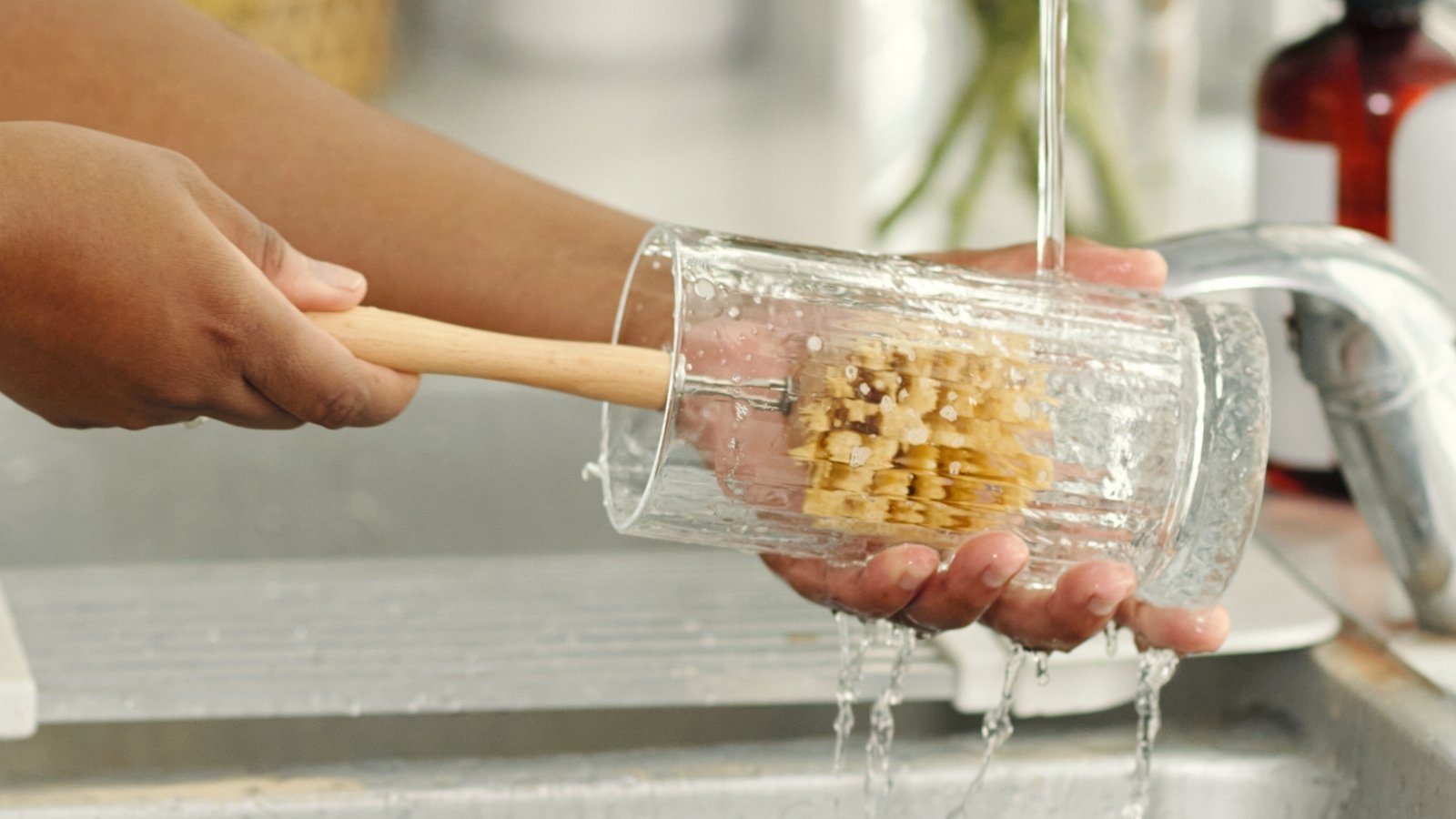 Soapy water now means fewer wilted petals later.
Soapy water now means fewer wilted petals later.Often overlooked is a sanitizing wash of the vase to prolong flower life. With your ideal display vessel in hand, give it a soapy bath to strip away any dust or potential bacteria-causing agents. Hot water and dish detergent do the job. Or, a simple bleach and water solution disinfects the container. Stems produce their own bacteria as they rest in water, but a fresh start minimizes early buildup.
Give pruners a dip, too, before pruning and clipping roses. Fungal spores and diseases spread from plant to plant on tools in the clipping process, including the common rose problem, black spot. When moving between shrubs, an easy alcohol wipe across the blades disinfects pruners between stems. You can also spray or dip them in 70% isopropyl alcohol or a bleach and water solution.
Hydrate and Prepare
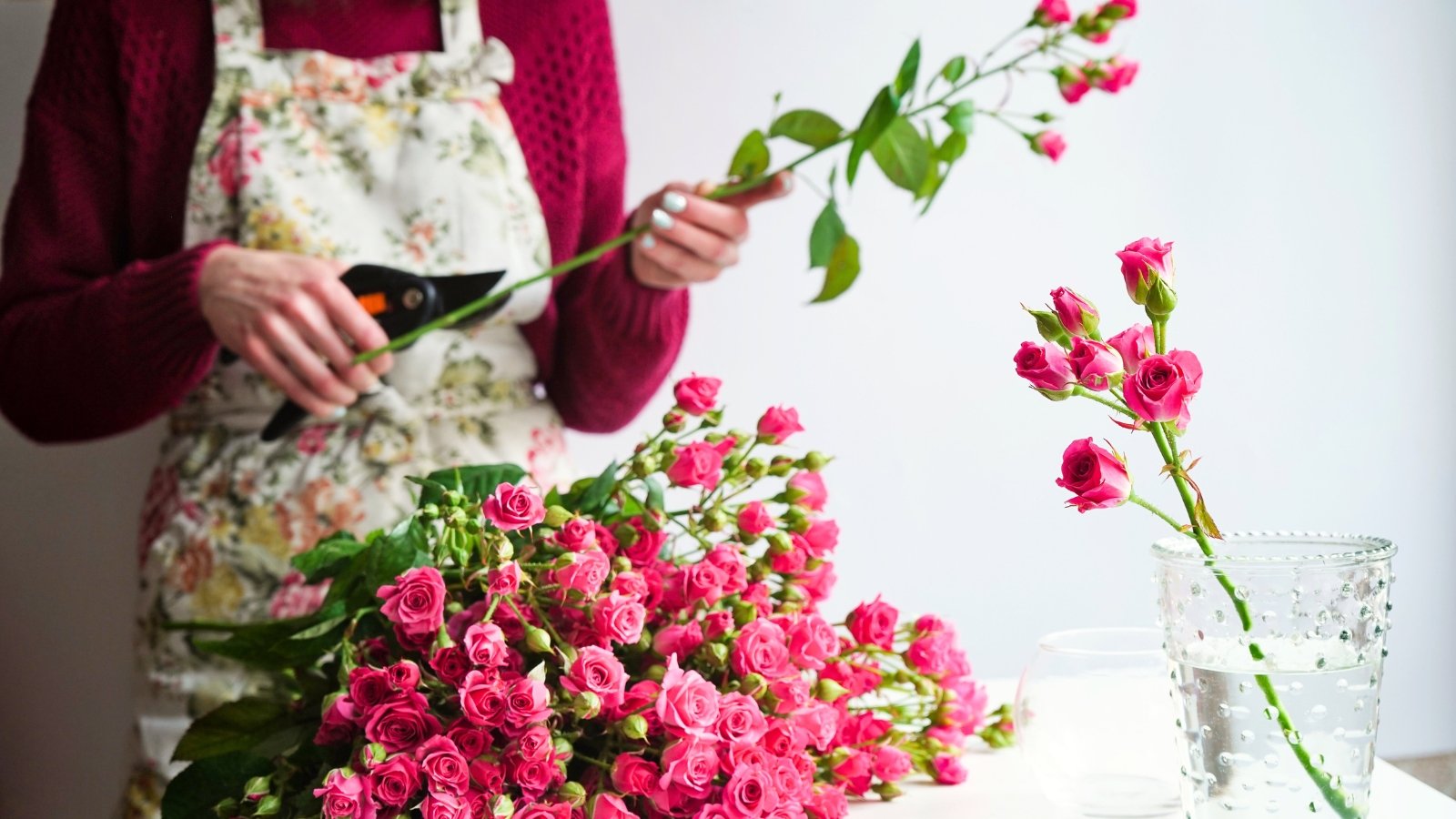 A clean cut and leaf trim go a long way.
A clean cut and leaf trim go a long way.If you’re not quite ready to arrange the fresh roses, keep them in water in a cool, dark space. A cooler or refrigerator stores them for several days, depending on the variety. When it’s time to create the display, give the stems a fresh cut – again at a 45-degree angle – to renew moisture uptake, reduce air bubbles on the stem’s tip, and clear any blockages. Trim at least one to two inches to refresh the stems.
Remove any lower leaves so they don’t sit in the water and instead direct the moisture absorption to buds and blooms. Without a need to support large leaves, more water can run right up the stem. A few upper leaves can remain for visual interest and as filler, but remove the bulk of foliage. Make sure the remaining leaves don’t fall below the water line to keep the water clean, reduce bacterial buildup, and create a crisp look.
Florists recommend using formulated floral food (the packets that come with bouquets), which are available commercially and include those specifically for roses. These regulate pH, support energy for flowering, and help keep the water clean. Experiment with your own flower food to see if there’s a difference in making the cut roses last longer.
To boost opening and improve the rosette’s aesthetic, remove the guard petals. These are the stiff outer petals, often more pale and greenish, that enclose the inner bloom. Carefully pull them down toward the stem to pluck them, taking care not to tear them. Guard petals serve to protect the bloom as it develops and hold the picture-perfect petals inside.
Placement
 A calm, cool corner helps them hold their poise.
A calm, cool corner helps them hold their poise.Where to house the arrangement is another determining factor in how long the cut roses last. Keep them out of direct sunlight, which accelerates their opening, shortens shelf life, and promotes bacteria in the water. Avoid heated or cooled drafts, too, which dry the petals. An average-to-cool room temperature is best for the florals.
Whether in the fridge or on the table, store them away from ripening fruits. Fruits like bananas, apples, and tomatoes produce ethylene, which damages petals and buds.
Refresh and Revive
 A little stem soak can sometimes turn things around.
A little stem soak can sometimes turn things around.Every few days or so, change out the arrangement’s water. Fresh, lukewarm water decreases pathogens, increases oxygen, and promotes absorption. Give the stems another fresh, angled cut when changing the water to promote continued water uptake.
If roses show quick wilting or bending at the neck and don’t revive with fresh water, try rehydrating them before tossing them out. Give stems an angled cut and soak the entire bloom and stem in a sink or bucket full of tepid water.
The petals absorb water and may perk up with hydration. Leave the bloom bathing for thirty minutes to an hour (the flowers fall apart with too much saturation) before gently removing it, giving it a light shake to dry, and replacing it in the arrangement. It’s an experiment worth trying if the roses aren’t past the point of no return.
Cool Overnight
 A night in the fridge helps them hold their charm.
A night in the fridge helps them hold their charm.While it may not be the most convenient strategy, storing roses in the refrigerator at night helps extend their vase life. Cooling slows their opening and development, too, if you’re aiming to time the arrangement with an event or occasion.
You can also move them to a cooler area of the house if different from the display spot. Mostly, enjoy the floriferous beauty – one of life’s simple pleasures – while it lasts.


 4 weeks ago
22
4 weeks ago
22





















 English (US) ·
English (US) ·  French (CA) ·
French (CA) ·